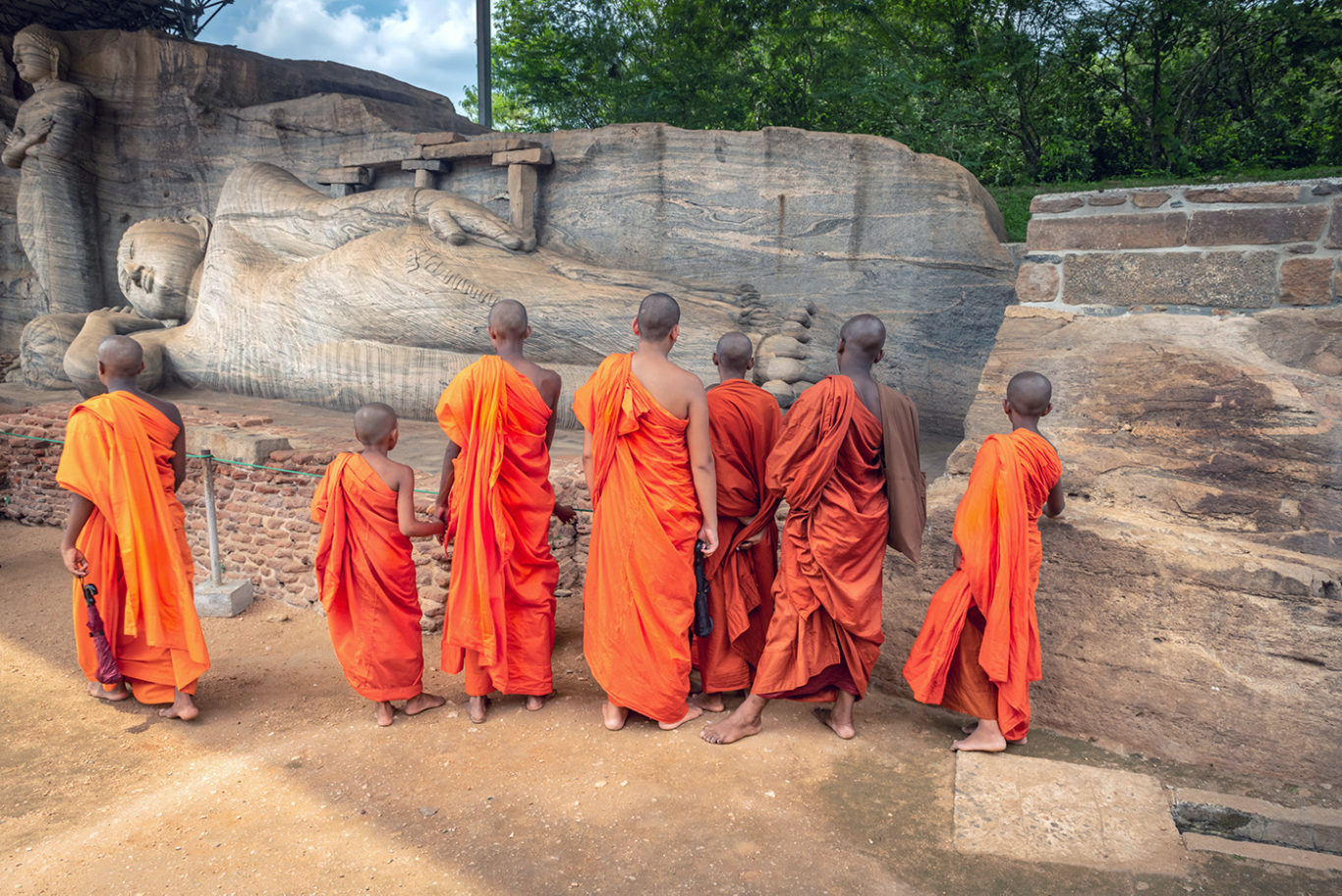Inside the Theravada Tradition

A small group of Theravada monks look at a Buddha statue in Sri Lanka, the birthplace of Theravada Buddhism. | Terry Mathews / Alamy Stock Photo
Theravada, the “way of the elders,” rests on core Buddhist teachings and is the predominant form of Buddhism in Southeast Asia, where it has been practiced for twenty-two centuries.
Theravada is often considered to have remained the closest to the Buddha’s original teachings and bears the most similarity to early Buddhism. The foundation of the Theravada school is the sermons, discourses, and teachings assembled in the Pali canon, which includes some of the earliest written records of the dharma.
Like all forms of Buddhism, the Theravada school today is comprised of many different schools, some monastic and others more oriented toward lay practitioners. In the West, the popular Vipassana, or Insight Meditation, school is a lay meditation tradition based in Theravada tradition of Myanmar (formerly Burma).
Discover the rich history and philosophy of Buddhism’s “way of the elders” in Level 2, Deck 2:
Are there different types of Theravada Buddhism? Explore the differences between Thai Forest, Vipassana, and other Theravada traditions.
What are the teachings of Theravada Buddhism? Theravada places a major emphasis on the foundational teachings of the four noble truths and the noble eightfold path.
What are the practices of Theravada Buddhism? Ethical conduct (sila), concentration (samadhi), and wisdom (panna) are cultivated simultaneously along the Theravada path.
What is the Buddha’s role in Theravada? Of all Buddhist traditions, Theravada places the most emphasis on the Buddha as a historical figure.
What are some important texts in Theravada? The scriptures of the Pali canon are believed to be among the earliest surviving written records of what the Buddha taught during his lifetime.
Who are some important figures in Theravada? Ajaan Chan, a Thai Forest teacher who was instrumental in Theravada to the West, attracted many American students and founded two major Thai Forest monasteries.
What’s the structure of Theravada societies? The reciprocal relationship of the monastic sangha and the laity plays an important role in Theravadin communities.
How does Theravada characterize nirvana? Nirvana, or awakening, is the ultimate goal of the Theravada Buddhist path. After experiencing nirvana, one becomes an arahant (“worthy one”).
What is the Vipassana movement? Although Vipassana is now one of the most popular forms of meditation in the West, it didn’t start out as a meditation practice.
Theravada in Southeast Asia: Theravada has been practiced for over 2,000 years in Southeast Asia, and is the main religion of Sri Lanka, Thailand, Laos, Cambodia, and Myanmar.
Theravada in the West and around the world: American teachers, including Jack Kornfield, Sharon Salzberg, and Joseph Goldstein, founded the Insight Meditation Society in Barre, Massachusetts, sparking the Insight Meditation movement in the West.
Recommended Reading:
- Theravada Vipassana Practice, by Jack Kornfield
- Less Is More, by Thanissaro Bhikkhu
- Acts That Purify Our Existence: Dana, Sila and Bhavana, by Sayadaw U Pandita and Kate Lila Wheeler
- Awakening through the Jhanas, by Sarah Shaw
- I Teach Only Suffering and the End of Suffering, by Ven. Bhikkhu Bodhi

Tricycle is more than a magazine
Gain access to the best in sprititual film, our growing collection of e-books, and monthly talks, plus our 25-year archive
Subscribe now